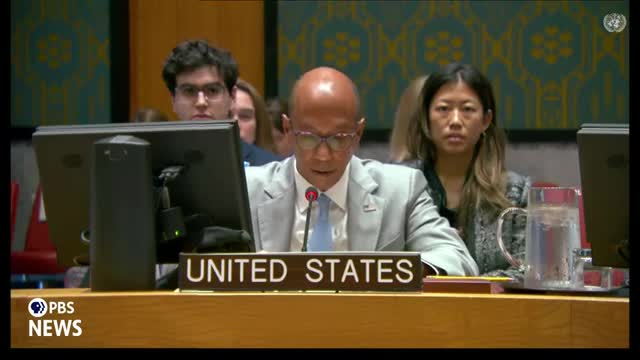Hezbollah escalates attacks threatening regional stability
This article was created by AI summarizing key points discussed. AI makes mistakes, so for full details and context, please refer to the video of the full meeting. Please report any errors so we can fix them. Report an error »

In a recent government meeting, discussions centered on the escalating conflict between Hezbollah and Israel, particularly following a significant uptick in hostilities that began on October 8. This marked a departure from nearly two decades of relative calm along the blue line, the demarcation line between Israel and Lebanon.
Hezbollah's initiation of rocket attacks and subsequent infiltration into Israeli territory has led to a sustained barrage of assaults on northern Israel, occurring almost daily over the past eleven months. This situation has raised concerns about the safety of both Israeli and Lebanese civilians, as well as the broader stability and sovereignty of Lebanon itself.
A notable point of contention during the meeting was the lack of condemnation from the council regarding Hezbollah's actions. Some members expressed regret that a minority blocked efforts to address these destabilizing activities in the recent mandate renewal. The discussions highlighted the role of Iran in supplying Hezbollah with weaponry, which is seen as a violation of the arms embargo established in resolution 1701.
The United States reaffirmed its support for Israel's right to defend itself against these ongoing attacks, emphasizing that no nation would tolerate such aggression on its borders. The meeting concluded with a call for a comprehensive understanding that would not only restore calm but also ensure the safe return of displaced residents from both sides of the blue line. The path to regional stability, according to the discussions, hinges on effective implementation mechanisms that address the root causes of the conflict.
Hezbollah's initiation of rocket attacks and subsequent infiltration into Israeli territory has led to a sustained barrage of assaults on northern Israel, occurring almost daily over the past eleven months. This situation has raised concerns about the safety of both Israeli and Lebanese civilians, as well as the broader stability and sovereignty of Lebanon itself.
A notable point of contention during the meeting was the lack of condemnation from the council regarding Hezbollah's actions. Some members expressed regret that a minority blocked efforts to address these destabilizing activities in the recent mandate renewal. The discussions highlighted the role of Iran in supplying Hezbollah with weaponry, which is seen as a violation of the arms embargo established in resolution 1701.
The United States reaffirmed its support for Israel's right to defend itself against these ongoing attacks, emphasizing that no nation would tolerate such aggression on its borders. The meeting concluded with a call for a comprehensive understanding that would not only restore calm but also ensure the safe return of displaced residents from both sides of the blue line. The path to regional stability, according to the discussions, hinges on effective implementation mechanisms that address the root causes of the conflict.
View full meeting
This article is based on a recent meeting—watch the full video and explore the complete transcript for deeper insights into the discussion.
View full meeting